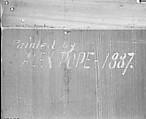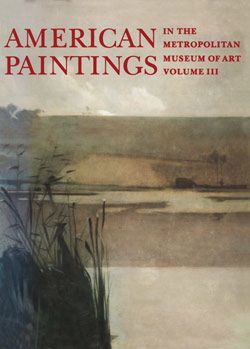The Oak Door
Alexander Pope American
Not on view
The carvings and illustrations with which Pope began his artistic career usually portrayed living birds and animals. William Michael Harnett’s accomplishments apparently inspired him to attempt trompe-l’oeil (“deceive the eye”) still lifes in the 1880s. This work, a trophy of the hunt, depicts with extraordinary accuracy a Remington Arms rifle, a crocheted game bag, and a dead ring-necked pheasant. Rather than simulating the grain of an oak door, Pope painted on an oak panel, added a matching oak frame, and delineated Renaissance Revival hinges, an escutcheon of Chippendale design, and a lion’s-head pull.
This image cannot be enlarged, viewed at full screen, or downloaded.
This artwork is meant to be viewed from right to left. Scroll left to view more.




